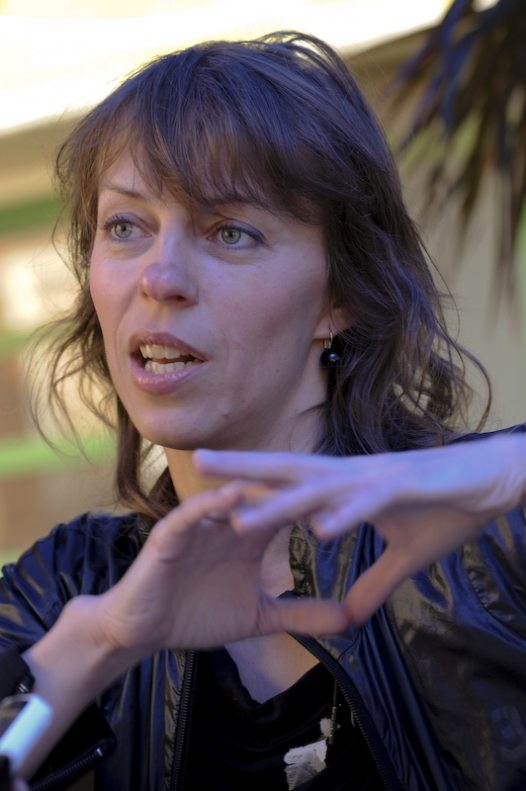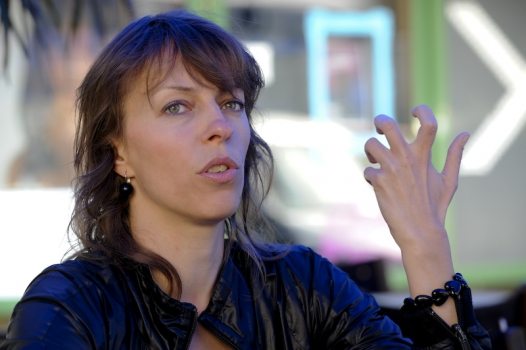This will be the first time that you will appear with an independent work in Hungary. Why is that?
The main reason is probably that I left Hungary in 1991. Initially it was a temporary move, because I had not been able find myself a dance troupe or work that would have really interested me. So I told myself that I should completely give up dance. Eventually, through various chance encounters, I ended up staying in France and worked there as a dancer for ten years. In 2000, I started creating choreographies independently. Since I moved to Berlin, I have put on many performances, and I have contacted the Trafó several times. They saw some of my performances but said my work was too experimental for Hungarian audiences. Many people said that I represent an art form that is difficult to be shown and accepted in Hungary.
After all, you studied in Budapest, in the ballet institute, this is where you started from. What's your assessment of that period?
That is a complicated question. I studied at the ballet institute for eight years. At that time, the pedagogical methods at the ballet institute were based on the Russian ballet technique and training was very one-track. After that, I had to practice for years to stop walking like a duck and be able to move differently. This is not easy because if you start something as a teenager and do it for eight years, then it gets fixed in your brain and your body learns it so well that they are unable to function differently for a long time. I had to work for years to leave all that behind. In dance, your body is immersed in all your experiences and it is impossible to take them off like a pair of worn trousers. For instance in 2005, I created a performance entitled Hungarian Dances which was somehow about my past, it was a professional CV.
With Hungarian Dances did you also want to show Hungarian folk dance abroad or was it more a piece to define yourself?
I had no such purpose. There are folk dance groups and folk shows for that. This is a contemporary piece, in which we dance and play music, and I also speak quite a lot. For instance, I also dance some male parts in it, which I was never allowed to do as a young dancer, because we were not supposed to. Yet, I always wanted to dance those because they are more virtuoso and individualistic. In Hungarian folk dance, an individualistic female dance style has not really developed - so I wanted to talk about this tradition through my own experiences.
You will arrive in Trafó with your piece entitled Dance #1/Driftworks. Is this a series? The second part of an experiment? What are you aiming at, what are you examining in this work process?
I had a piece entitled nvsbl, which stood for invisible. The performance was maturing for many years. I started working with dancers intuitively, in a self-trained way, using the Body-Mind Centering method developed by the American Bonnie Bainbridge Cohen. This technique developed with children and sick people has many building blocks, including eastern medicine, yoga, aikido and also on anatomy. When preparing nvsbl, I set out to prepare an invisible choreography with four female dancers. It was an extremely slow process and very demanding physically, so I looked for a method to help dancers really think about how to make their movements, thinking along very different categories, independent from the external space. They had to focus on the processes that took place in their various body parts, achieving a level of concentration that could create an invisible dance. The audience probably could not see the movement in space. I was interested in changing the hierarchy of space and time. To show movement in time, over a period of time, instead of showing it in space, between two points. In Dance #1 I work with Christine de Smed who was also involved in this earlier piece. Now we are using our Body-Mind Centering exercises very differently. We have worked on body systems, varying them and developing various scores. The performance is the result of research work.
With what feelings have you arrived in Hungary?
I have no idea how audiences will react, but I am looking forward to it. Sometimes I wonder if they'll think I'm a UFO...
Interviewer: Éva Kelemen / Photo: Dániel Kováts




